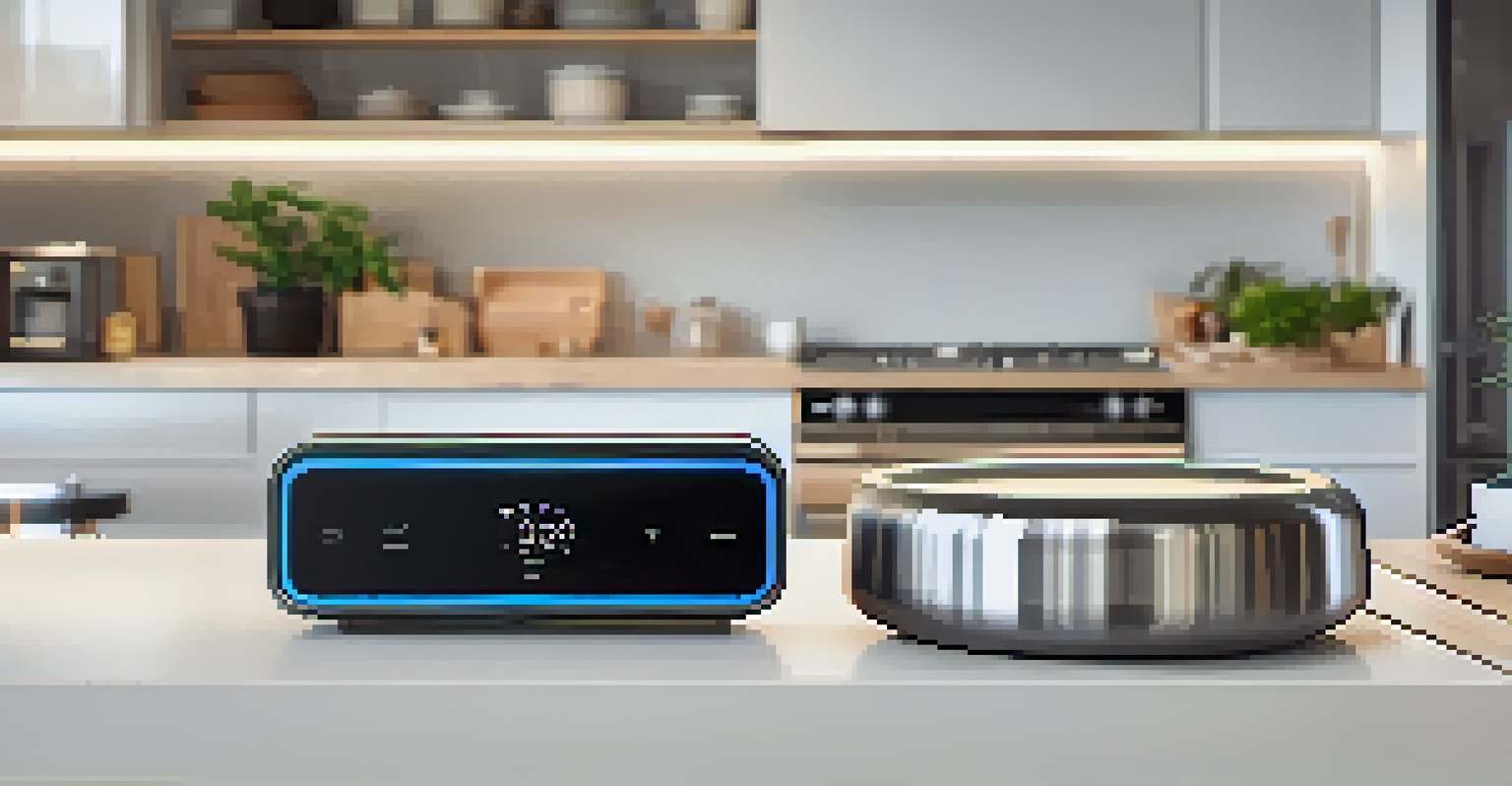Home Automation Systems and Their Compatibility with Devices

What Are Home Automation Systems?
Home automation systems allow you to control various household functions remotely, making your life more convenient. Think of it as having a personal assistant for your home, managing everything from lights to security systems. These systems can be centralized in one app, letting you control multiple devices with just a few taps on your smartphone.
The future is already here – it's just not very evenly distributed.
Imagine coming home to a house that knows your preferences—lights dimmed just right, the thermostat set to your favorite temperature, and even your coffee brewing. This level of convenience doesn’t just enhance comfort; it can also improve energy efficiency. By automating certain tasks, you can reduce unnecessary energy consumption and lower your utility bills.
In essence, home automation systems are designed to simplify everyday tasks, allowing you to focus on what matters most. Whether you’re tech-savvy or just starting, there’s a system out there that can work for you, making your home smarter and your life easier.
Types of Devices Compatible with Home Automation Systems
Home automation systems can integrate with a wide variety of devices, including lights, thermostats, cameras, and even kitchen appliances. For example, smart bulbs can be programmed to turn on or off at specific times or adjusted through voice commands. This connectivity allows for a seamless experience where everything is harmonized under one umbrella.

Additionally, you’ll find that many popular brands offer devices that are specifically designed to work with home automation systems. Products like smart locks enhance security while being manageable through your smartphone. The variety of compatible devices means you can customize your system to fit your lifestyle, whether you want basic automation or a fully integrated smart home.
Home Automation Simplifies Life
Home automation systems allow for remote control of household functions, enhancing convenience and energy efficiency.
As you explore your options, consider factors like connectivity—devices that use Wi-Fi, Bluetooth, or Zigbee protocols may have different compatibility levels. Understanding these types of connections can help you choose devices that work well together, ensuring a smooth and efficient home automation experience.
Benefits of Integrating Multiple Devices
Integrating multiple devices into your home automation system can significantly enhance convenience and efficiency. For instance, connecting your security cameras with smart locks creates a cohesive security solution that can be monitored from anywhere. When everything is linked, you can automate routines that save you time and effort.
Technology is best when it brings people together.
Consider the morning routine: with automation, your coffee maker can start brewing as your alarm goes off, while the lights gradually brighten to mimic a natural sunrise. This level of integration leads to a smoother transition into your day and can even improve your mood. It’s like choreographing a dance where all your devices perform in sync.
Moreover, integrating devices can contribute to energy savings. Smart thermostats can learn your habits and adjust heating or cooling based on when you’re home, which ultimately reduces energy waste. This not only saves you money but also benefits the environment by lowering your carbon footprint.
Challenges with Device Compatibility
While home automation systems offer incredible benefits, compatibility issues can pose challenges. Not all devices are designed to work together, which can lead to frustration if you invest in products that don’t sync. It’s important to research device compatibility before making purchases to avoid these headaches down the line.
For example, a smart speaker might not seamlessly connect with certain smart bulbs if they are from different manufacturers. This can limit your ability to create a fully automated experience. To mitigate these issues, consider sticking to devices from the same ecosystem, or those labeled as ‘Works with [your system]’ to ensure smooth integration.
Integration Boosts Efficiency
Connecting multiple devices can streamline routines and save energy, contributing to a smoother daily experience.
Additionally, software updates can sometimes create temporary compatibility glitches. Staying informed about updates and changes in your home automation system can help you manage these challenges effectively, keeping your home running smoothly.
Smart Home Hubs: The Central Control Unit
A smart home hub is a central device that connects and manages all your smart devices, allowing them to communicate with each other. Think of it as the conductor of an orchestra, ensuring that every instrument plays in harmony. This centralization simplifies the process, enabling you to control everything from one location.
Many hubs support a variety of protocols, which means they can bridge the gap between different devices that might not naturally connect. For example, if your smart thermostat uses Zigbee, but your lights operate on Wi-Fi, a smart hub can unify them. This flexibility allows for a more comprehensive home automation solution.
When choosing a smart hub, consider its compatibility with the devices you own or plan to purchase. A hub that integrates well with various brands will provide you with more options and future-proof your investment as new technologies emerge.
Voice Assistants and Their Role in Home Automation
Voice assistants like Amazon Alexa, Google Assistant, and Apple Siri have revolutionized the way we interact with home automation systems. These assistants allow you to control devices using simple voice commands, making automation even more user-friendly. For example, saying 'Turn off the living room lights' can instantly create a cozy atmosphere without reaching for a switch.
Moreover, voice assistants can be programmed to execute a series of commands with a single phrase, known as a 'routine.' You might say, 'Goodnight,' and your voice assistant will turn off all the lights, lock the doors, and adjust the thermostat. This level of convenience can significantly enhance your daily routine, making life feel a bit more effortless.
Voice Assistants Enhance Control
Voice assistants make it easy to manage smart devices with simple commands, further simplifying home automation.
It's worth noting that integrating voice assistants into your home automation system can sometimes require additional setup. Ensuring that all devices are compatible with your chosen voice assistant will enhance your experience and ensure that your commands are executed smoothly.
Future Trends in Home Automation Systems
As technology continues to evolve, the future of home automation systems looks promising. Innovations like artificial intelligence and machine learning are being integrated into these systems, allowing them to learn and adapt to your habits. Imagine a home that anticipates your needs and adjusts automatically without any input.
Furthermore, the rise of the Internet of Things (IoT) means that even more devices will become compatible with home automation systems. Everyday items, from your refrigerator to your garden, can be monitored and controlled remotely, expanding the possibilities of what a smart home can do. This interconnectedness will make home management increasingly effortless.

Lastly, as awareness of energy efficiency grows, more homeowners are seeking smart solutions that contribute to sustainability. Future home automation systems will likely focus on reducing energy consumption, incorporating renewable energy sources, and promoting eco-friendly living. This trend not only benefits your wallet but also the planet.